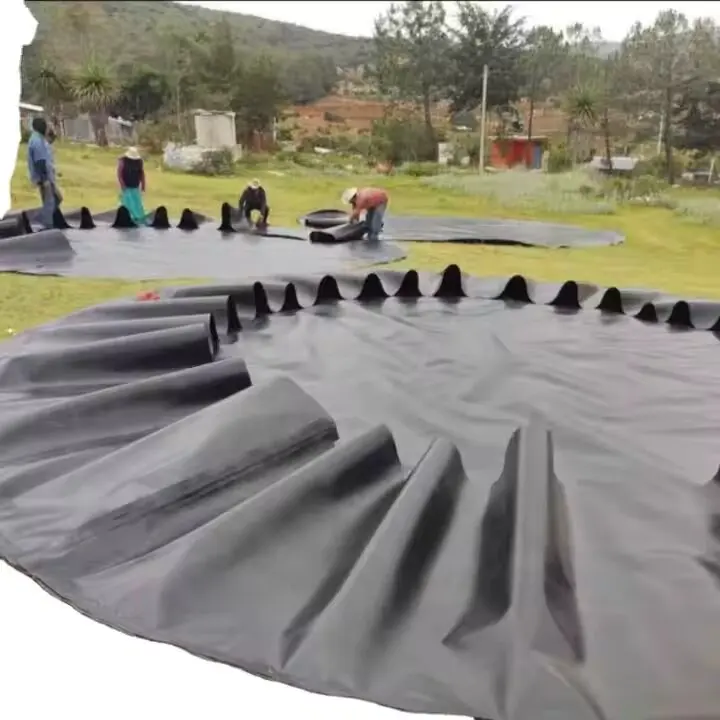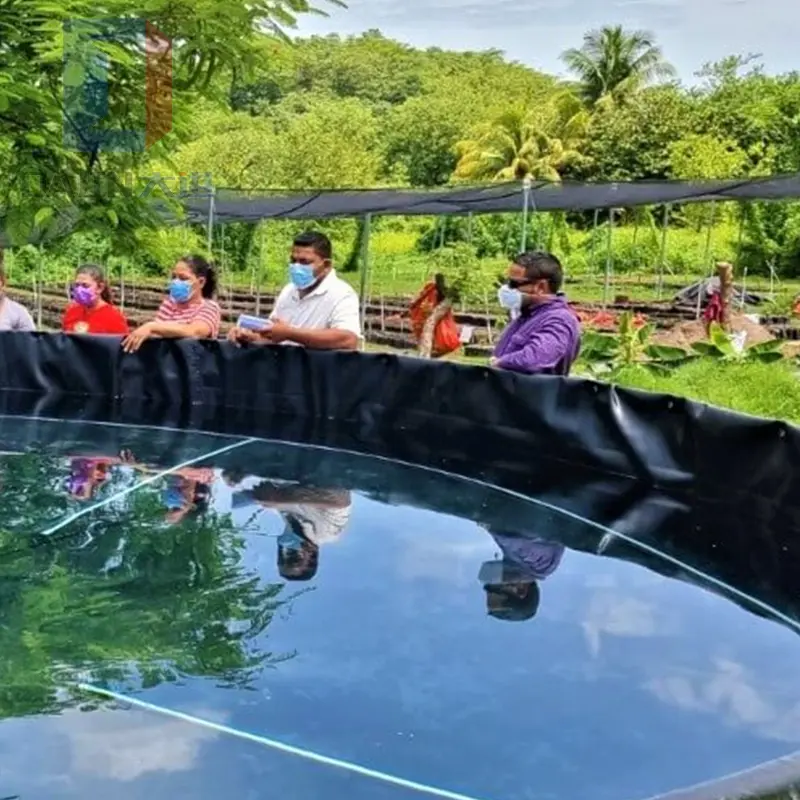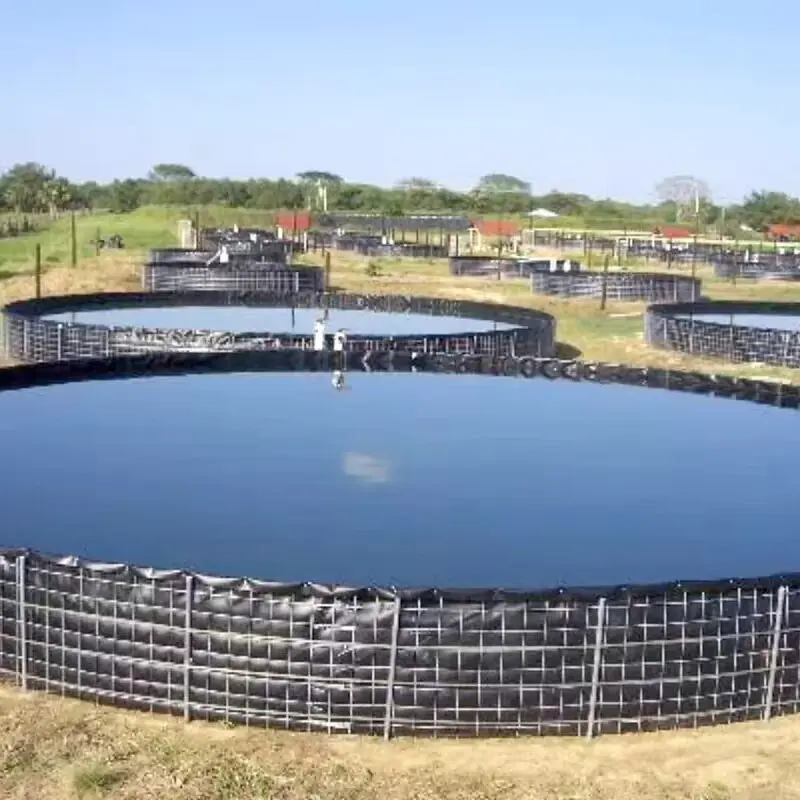In recent years, the agricultural sector in South Africa has faced numerous challenges, including water scarcity, soil degradation, and the need for sustainable farming practices. To address these issues, the adoption of innovative technologies has become essential. One such technology is the use of HDPE (High-Density Polyethylene) geomembranes. These durable and versatile materials have proven to be a game-changer in agricultural applications, offering solutions for water conservation, soil protection, and enhanced productivity.
Understanding HDPE Geomembrane
HDPE geomembranes are synthetic liners made from high-density polyethylene resin. Known for their durability, flexibility, and impermeability, these geomembranes serve as barriers to liquids and gases. Their exceptional resistance to chemicals, UV radiation, and environmental stress cracking makes them suitable for a wide range of agricultural uses.
Key features of HDPE geomembranes include:
High Strength and Flexibility: They can withstand extreme weather conditions and mechanical stress.
Chemical Resistance: Resistant to a variety of chemicals, including fertilizers and pesticides.
UV Stability: Specially formulated to resist degradation from prolonged sun exposure.
Longevity: Designed to last for decades under proper installation and maintenance.

The Role of HDPE Geomembrane in Agriculture
Agriculture in South Africa is diverse, ranging from large-scale commercial farming to smallholder subsistence farming. Water management and soil preservation are critical concerns for both. Here’s how HDPE geomembranes contribute to solving these challenges:
1. Water Conservation
South Africa is a water-scarce country, and efficient water management is a priority for agricultural sustainability. HDPE geomembranes are widely used to line irrigation canals, reservoirs, and water storage tanks. By preventing seepage and water loss, they ensure that water resources are utilized efficiently.
For example, farm reservoirs lined with HDPE geomembranes can store rainwater or runoff for irrigation during dry seasons. This helps farmers maintain consistent crop yields despite erratic rainfall patterns.
2. Aquaculture Development
Aquaculture is a growing sector in South Africa, contributing to food security and economic growth. HDPE geomembranes are essential in constructing fish ponds and shrimp farms. Their impermeability prevents water seepage, maintains water quality, and reduces the risk of contamination from surrounding soils.
Moreover, HDPE liners create a controlled environment for aquatic species, enabling better management of feeding, growth, and disease prevention.
3. Landfill and Composting Applications
Agricultural waste management is another area where HDPE geomembranes play a vital role. They are used as liners for agricultural landfills and composting sites, preventing leachate from contaminating groundwater. This is particularly important in areas where agricultural runoff can affect nearby ecosystems.
4. Greenhouse Farming
In South Africa, greenhouse farming is becoming increasingly popular due to its ability to maximize crop yields in limited spaces. HDPE geomembranes are used as ground covers within greenhouses to suppress weed growth, conserve soil moisture, and regulate soil temperature.

Advantages of Using HDPE Geomembrane
The benefits of HDPE geomembranes in agriculture are numerous:
Cost-Effectiveness: While the initial investment may be higher, the long-term savings from reduced water loss, enhanced crop productivity, and minimal maintenance make HDPE liners economically viable.
Environmental Protection: By preventing soil erosion, groundwater contamination, and resource wastage, HDPE geomembranes contribute to sustainable farming practices.
Adaptability: HDPE liners can be customized to fit various applications, making them suitable for farms of all sizes and types.
Ease of Installation: Modern HDPE geomembranes come in prefabricated panels, allowing for quick and efficient installation.
Challenges and Solutions
Despite their many advantages, the use of HDPE geomembranes in South Africa’s agricultural sector is not without challenges. High upfront costs, lack of technical knowledge, and accessibility in remote areas can hinder adoption.
To address these issues:
Government Support: Subsidies and incentives can encourage farmers to invest in geomembrane technology.
Training Programs: Educating farmers and agricultural workers about installation and maintenance can improve effectiveness and longevity.
Partnerships with Local Suppliers: Collaborations with local manufacturers and distributors can make HDPE geomembranes more accessible and affordable.
Case Studies: HDPE Geomembrane in Action
Irrigation Reservoirs in Limpopo Province
A commercial farm in Limpopo lined its irrigation reservoir with HDPE geomembranes, reducing water loss by 80% and ensuring a reliable water supply during the dry season. This resulted in a 25% increase in crop yields.Aquaculture in KwaZulu-Natal
An aquaculture project in KwaZulu-Natal used HDPE geomembranes for fish pond liners, enhancing water retention and improving fish health. The project’s success led to increased income for local farmers and job creation in the community.
Future Prospects
The demand for HDPE geomembranes in South Africa is expected to grow as the agricultural sector continues to embrace sustainable practices. Advances in manufacturing technology are likely to make these geomembranes even more affordable and efficient. Furthermore, as awareness of their benefits increases, more farmers will adopt this innovative solution to address water and soil management challenges.
HDPE geomembranes are transforming agriculture in South Africa by offering effective solutions to some of the sector’s most pressing issues. From water conservation and aquaculture to waste management and greenhouse farming, these versatile materials have proven their value across diverse applications.
To maximize their impact, stakeholders must work together to overcome barriers to adoption, ensuring that farmers across the country can benefit from this technology. With the right support and resources, HDPE geomembranes have the potential to play a pivotal role in achieving a sustainable and productive agricultural future for South Africa.
Item | Unit | Index | |||||||||
1 | Thickness | mm | 0.30 | 0.50 | 0.75 | 1.00 | 1.25 | 1.50 | 2.00 | 2.50 | 3.00 |
2 | Density | g/cm3 | ≧0.940 | ||||||||
3 | Tensile yield strength | N/mm | ≧4 | ≧7 | ≧10 | ≧13 | ≧16 | ≧20 | ≧26 | ≧33 | ≧40 |
4 | Tensile breaking strength | N/mm | ≧6 | ≧10 | ≧15 | ≧20 | ≧25 | ≧30 | ≧40 | ≧50 | ≧60 |
5 | Yield elongation | % | - | - | - | ≧11 | |||||
6 | Break Elongation | % | ≧600 | ||||||||
7 | Right-angle Tearing strength | N | ≧34 | ≧56 | ≧84 | ≧115 | ≧140 | ≧170 | ≧225 | ≧280 | ≧340 |
8 | Puncture strength | N | ≧72 | ≧120 | ≧180 | ≧240 | ≧300 | ≧360 | ≧480 | ≧600 | ≧720 |
9 | Carbon black content | % | 2.0~3.0 | ||||||||
10 | Dispersion of carbon black | - | There is not more than one level 3 in 10 data, and level 4 and level 5 are not allowed to exist. | ||||||||
11 | Oxidation induction time | min | ≧60 | ||||||||
12 | Low temperature impact embrittlement properties | - | Pass | ||||||||
13 | Water vapor permeability coefficient | g.cm/ (cm2.s.Pa) | ≦1.0*10-13 | ||||||||
14 | Dimensional stability | % | ±2.0
| ||||||||
Note | Technical performance indicators for thickness specifications not listed in the table are required to be performed by interpolation. | ||||||||||
If you are interested in our products, please contact Tracy:
Tel&WhatsApp:+86 17853574041
Email:sale@hygeosynthetics.com
![]() 0.75 Double-sided smooth HDPE geomembrane.pdf
0.75 Double-sided smooth HDPE geomembrane.pdf
577.webp)

503.webp)
759.webp)
897.webp)
942.webp)
237.webp)